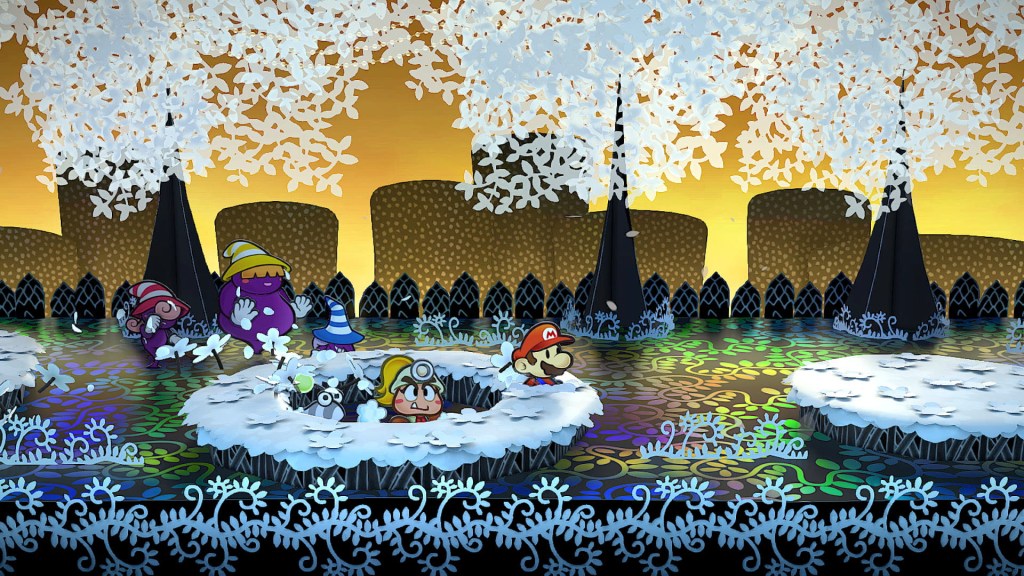Recently, I had the chance to attend a virtual preview of the upcoming Nintendo Switch remake of Paper Mario: The Thousand-Year Door. I haven’t played any of the Paper Mario titles, as my experience with the franchise is largely relegated to watching friends play it or checking out Let’s Plays online. As such, I was excited to see more of the specific entry in the series that I’ve heard so much about, and I walked away rather impressed.
The first thing I noticed during the preview was how sharp the visual style is. Obviously, the entire franchise is renowned for its iconic look — everything is made of paper or other arts-and-crafts supplies, with the characters themselves being as flat as a board due to their paper nature. The characters and environments are clearer and more detailed, while the lighting is more vivid, giving the entire aesthetic a shiny update that doesn’t lose the charm of the original. The same goes for the remade music, though a new “Nostalgic Tunes” item allows you to revert to the original soundtrack if that’s your preference.
The turn-based combat of The Thousand-Year door is quite charming. I got to see a few different battles, including a boss fight against the large dragon Hooktail, with each battle providing a better look at how things work. Mario had a wide variety of flashy special attacks in addition to his standard jumping and hammer moves, with all of the attacks taking advantage of the papercraft look in fun ways. It’s a delightful spin that sets combat apart from other similar RPGs — even the Mario & Luigi series — as I’ve yet to see any other game series that so playfully uses this “arts-and-crafts” aesthetic.
All of the Paper Mario charm I’d heard so much about was on full display in Paper Mario: The Thousand-Year Door. The characters all ooze silly charisma and goofy appeal, with lots of little jokes and quips included in the dialogue — even in battles. For example, the person playing used a badge to make Mario’s attacks sound like a frog, which exploited Hooktail’s fear of amphibians. This made the boss much more nervous throughout the battle, with the fight culminating in a scene in which Hooktail tries to repeatedly trick Mario into getting hit by bribing him. It’s little things like this that give the game a truly unique flavor, which was the thing that grabbed my attention the most during the preview.
Some new additions in this remake include the ability to swap partners in the field, a Battle Master NPC that allows you to practice your button input timing at will, and a hint system that nudges you toward where you’re supposed to go next at the press of a button. Additionally, there’s a new NPC who gives you hints about sidequests for a fee and additional content in the art and sound galleries for players to unlock.
I’m very excited to play the full version of Paper Mario: The Thousand-Year Door when it releases on the Switch on May 23, as it seems to be right up my alley with its goofy charm and quirky gameplay. The new additions seem tailor-made to help newcomers like myself integrate with the game even better from the get-go, so I’m looking forward to finally experiencing this classic I’ve heard so much about in its new and updated state.










